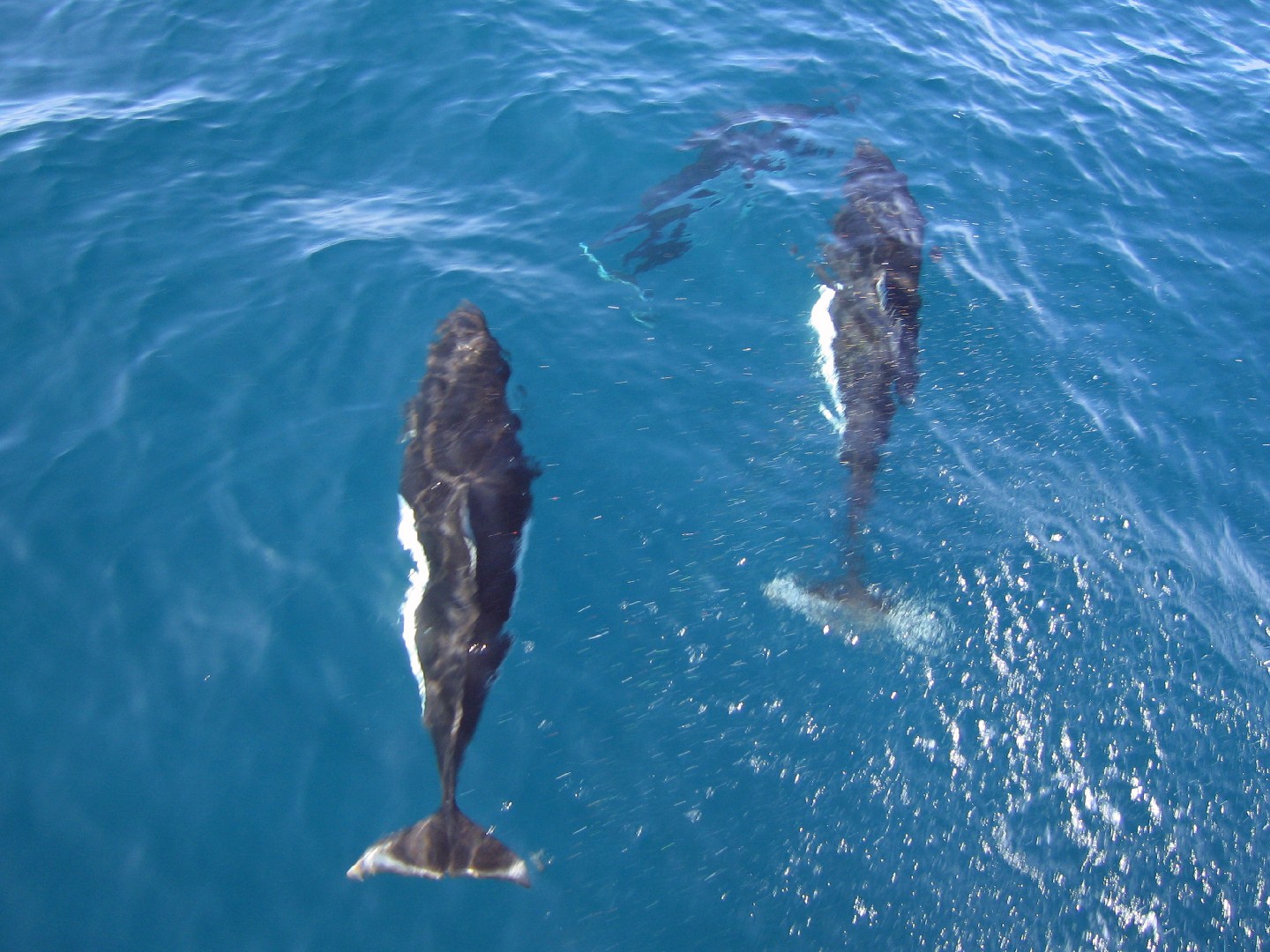Dall's porpoise
A species of Dall's porpoises, Also known as White-flanked porpoise Scientific name : Phocoenoides dalli Genus : Dall's porpoises
Dall's porpoise, A species of Dall's porpoises
Also known as:
White-flanked porpoise
Scientific name: Phocoenoides dalli
Genus: Dall's porpoises
Content
Description General Info
 Photo By GregTheBusker , used under CC-BY-2.0 /Cropped and compressed from original
Photo By GregTheBusker , used under CC-BY-2.0 /Cropped and compressed from original Description
The body shape of Dall's porpoise makes it easily distinguishable from other cetacean species. The animal has a very thick body and a small head. The colouration is rather like that of a killer whale; the main body of the porpoise is very dark grey to black, with very demarcated white patches on the flank and belly. The dorsal fin is set just back from the middle of the back and sits up erect. The upper part of the dorsal fin has a white to light grey "frosting". The fluke has a similar frosting. The adult fluke curves back towards the body of the animal, which is another distinguishing feature. It is larger than other porpoises, growing up to 2.3 m (7.5 ft) in length and weighing between 130 and 220 kg (290 and 490 lb). There is also sexual dimorphism in the species, with males being larger, having a deeper caudal peduncle and a pronounced hump behind the anus. Young Dall's have a greyish tint and dark-colored flukes. 
General Info
Lifespan
20-25 years
Diet
Dall's porpoise primarily subsists on cephalopods and small fishes. Specific dietary constituents include squids like Gonatidae, and fish such as Walleye Pollock and Pacific Sandfish, contributing significantly to its daily nutrient intake.
Appearance
Dall's porpoise is small to medium-sized marine mammal with a robust body and a small, rounded head. It has a dark grey body with white undersides, no dorsal fin, and a pronounced dorsal hump instead. It also features a dense, smooth, blubber-rich skin instead of fur. No significant differences exist between genders or age groups.
Behavior
Dall's porpoise is an industrious forager, diving deep into marine waters for prey such as squid and fish. Typically solitary, interactions mostly occur for mating or communal feeding purposes. This species employs an echolocation system for communication and hunting, demonstrating sophisticated auditory capabilities.
Scientific Classification
Phylum
Chordates Class
Mammals Order
Whales and dolphins Family
Porpoises Genus
Dall's porpoises Species
Dall's porpoise